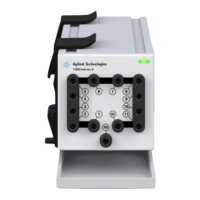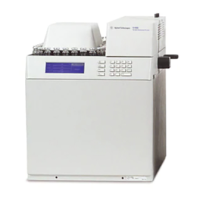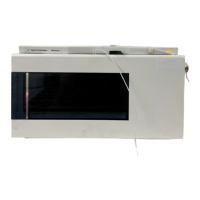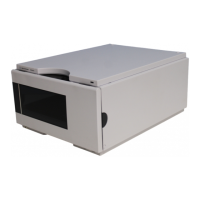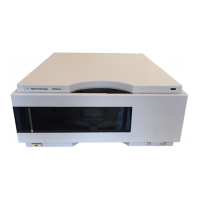Agilent InfinityLab LC Series Vialsamplers User Manual 146
4 Preparing the Module
Solvent Information
• Halogenated solvents or mixtures which form radicals and/or acids, for
example:
2 CHCl
3
+ O
2
→ 2 COCl
2
+ 2 HCl
This reaction, in which stainless steel probably acts as a catalyst, occurs
quickly with dried chloroform if the drying process removes the stabilizing
alcohol.
• Chromatographic grade ethers, which can contain peroxides (for example,
THF, dioxane, diisopropylether). Such ethers should be filtered through dry
aluminium oxide which adsorbs the peroxides.
• Solutions of organic acids (acetic acid, formic acid, and so on) in organic
solvents. For example, a 1
% solution of acetic acid in methanol will attack
steel.
• Solutions containing strong complexing agents (for example, EDTA, ethylene
diamine tetra-acetic acid).
• Mixtures of carbon tetrachloride with isopropanol or THF.
Titanium (Ti)
Titanium is highly resistant to oxidizing acids (for example, nitric, perchloric and
hypochlorous acid) over a wide range of concentrations and temperatures. This
is due to a thin oxide layer on the surface, which is stabilized by oxidizing
compounds. Non-oxidizing acids (for example, hydrochloric, sulfuric and
phosphoric acid) can cause slight corrosion, which increases with acid
concentration and temperature. For example, the corrosion rate with 3
% HCl
(about pH 0.1) at room temperature is about 13 μm/year. At room temperature,
titanium is resistant to concentrations of about 5
% sulfuric acid (about pH 0.3).
Addition of nitric acid to hydrochloric or sulfuric acids significantly reduces
corrosion rates. Titanium is sensitive to acidic metal chlorides like FeCl
3
or CuCl
2
.
Titanium is subject to corrosion in anhydrous methanol, which can be avoided by
adding a small amount of water (about 3
%). Slight corrosion is possible with
ammonia > 10
%.
Diamond-Like Carbon (DLC)
Diamond-Like Carbon is inert to almost all common acids, bases and solvents.
There are no documented incompatibilities for HPLC applications.

